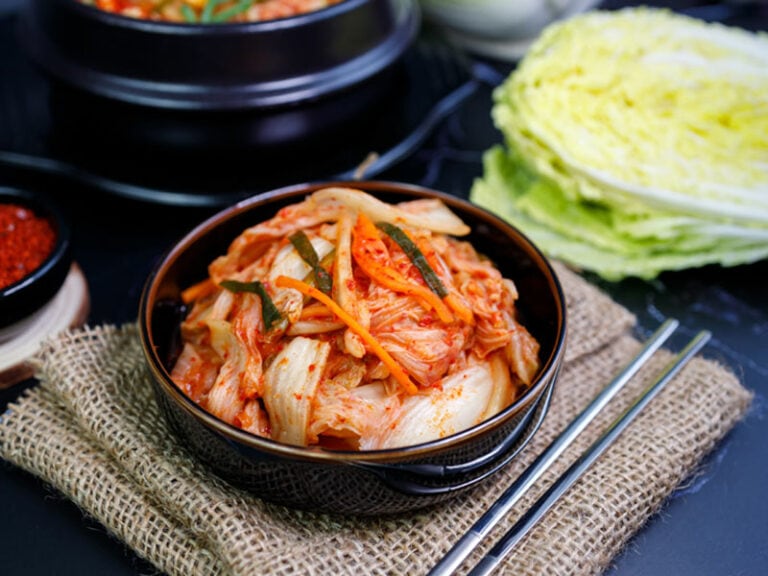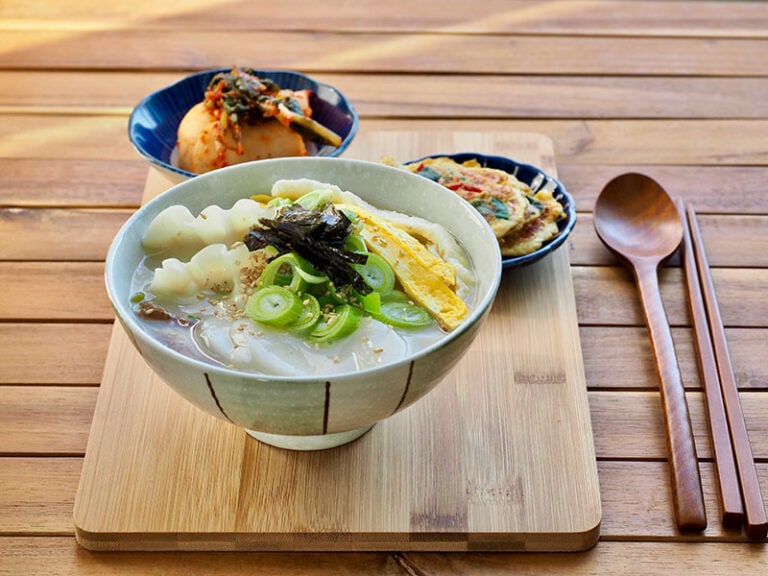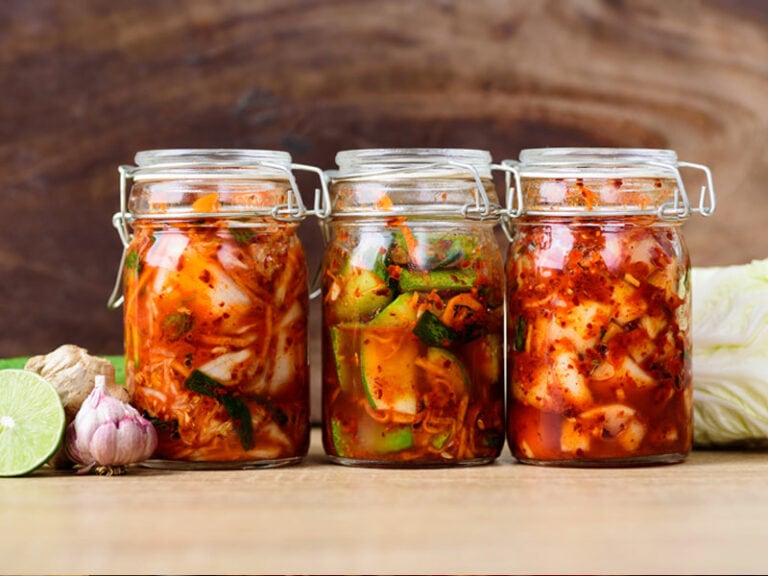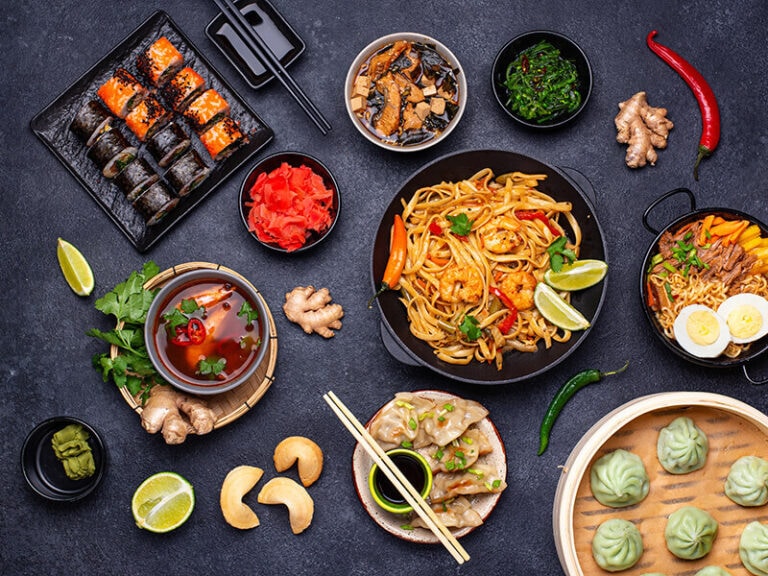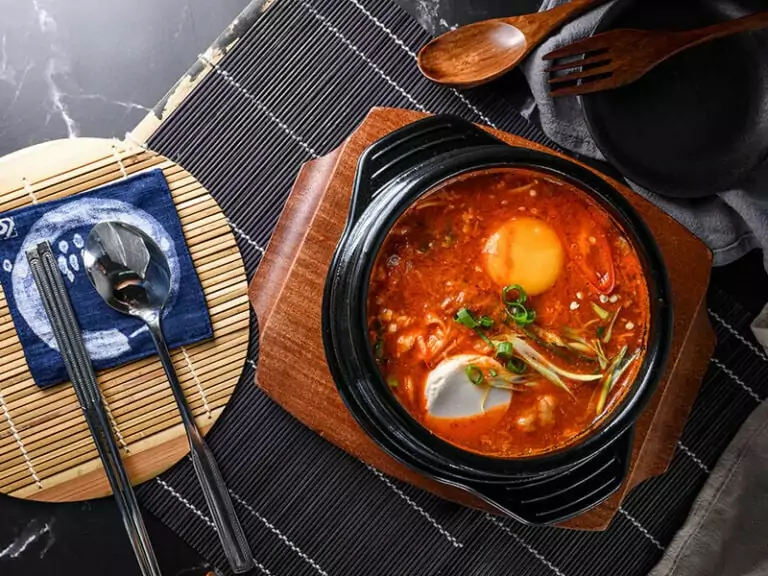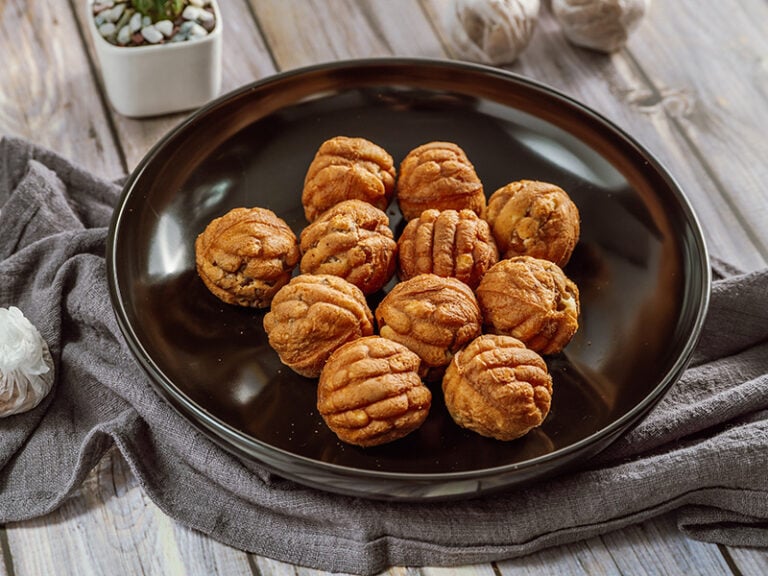What does kimchi taste like? Kimchi is a traditional Korean iconic dish that has gained its reputation nationwide and made its way to the stage of worldwide cuisine.
Kimchi is famous for its unique ingredient mixture of napa cabbage, garlic, carrot, ginger, and spices. Its diverse flavors will take you from sweet to spicy and then sour.
This article will introduce you to the last taste of this savory dish.
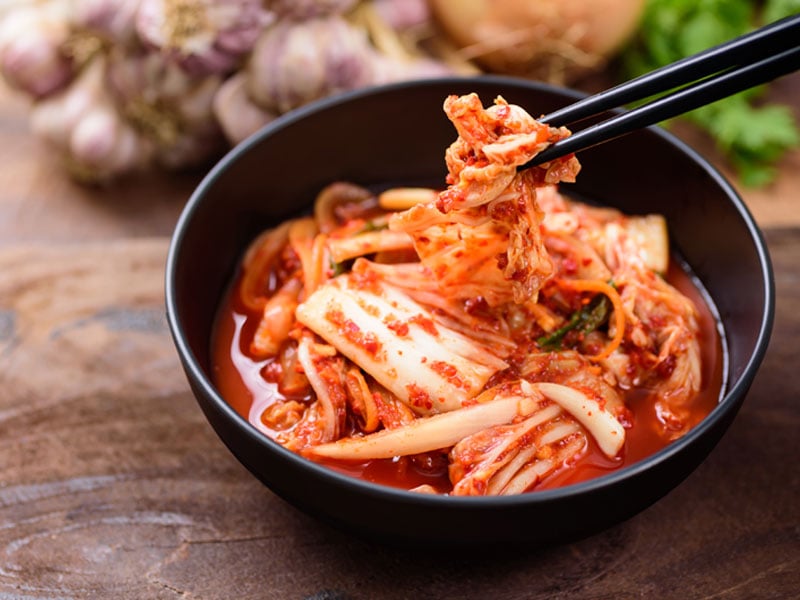
Everything About Kimchi
The famous spicy kimchi is not always like it used to be. The evolution of kimchi has been a part of Korea’s history. Its ingredients and flavors have significantly changed over time.
Kimchi’s History
Kimchi originally didn’t come with the ingredients in its present recipes, such as napa cabbage, garlic, and chili pepper. Kimchi was just a method of fermenting local vegetables in preparation for harsh winters in Korea.
Not until the Silla dynasty (57 BC-AD 935) did kimchi become popular due to the widespread adoption of Buddhism, but the original kimchi was not a spicy dish. (1)
The practice of pickling vegetables was the best way to lengthen the consumption time of foods before the refrigerator was a thing. Originally, people made kimchi by fermenting vegetables in large ceramic pots called “oongi” and burying those pots in the ground.
Portuguese traders introduced chili pepper and garlic, essential parts of modern kimchi, first introduced into Korea in the 17th century. However, it was not until the 19th century that the spicy taste of kimchi became popular.
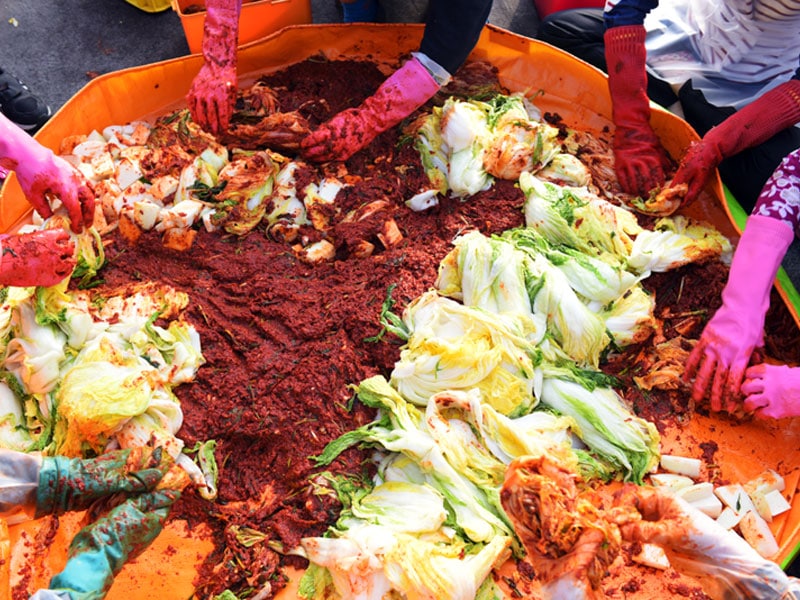
The Making Of Kimchi
It is not hard to create kimchi, but making tasty and savory kimchi is not a piece of cake. It’s more challenging than you might think.
Kimchi goes through a fermentation process called Lacto-fermentation. This method aims to produce probiotics to naturally generate a lactic acidic environment to retard the growth of fungus spores and harmful bacteria while letting the good bacteria thrive.
Here is how people make kimchi:
1. The Brining stage
This first step plays the most important part in the successful making of kimchi.
In this preparation stage, cabbage is soaked in a salty brine to extract the excess moisture in its cells and eliminate bacteria. This is called the wet method.
In the dry method, sea salt is sprinkled thoroughly on top of cabbage leaves and left to dry for 4 hours.
The salinity has to be around 2-5% which is salty enough to dehydrate the cabbage and kill off the bacteria. The brine must not be too salty to over-brine kimchi.
2. Add The Spices And Pastes
Add chopped garlic, ginger, fish sauce, sugar, and water into a bowl and mix well until they turn into a smooth paste. Proceed to include the Korean chili pepper (Gochugaru) in the mix. Place the cabbage into the bowl and coat the vegetables with spicy paste.
After that, pack the kimchi into jars. Press the kimchi a bit so that the brine covers the vegetables fully. Close the lid and wait for the fermentation.
3. Fermentation Time
There are plenty of styles and methods for the perfect pickling time, but I suggest 6 hours for a spot-on flavor.
If you leave your batch there too long, it will turn salty, and you can do nothing to fix it. If you rush your kimchi, it can be tasteless and become more like quick pickles, with a much shorter shelf life.
Check out this traditional kimchi recipe to learn how to make it!
Kimchi Variations
There are many kimchi variations with different main ingredients and recipes. Here are some famous kinds of kimchi:
1. Oi Sobagi (Cucumber Kimchi)
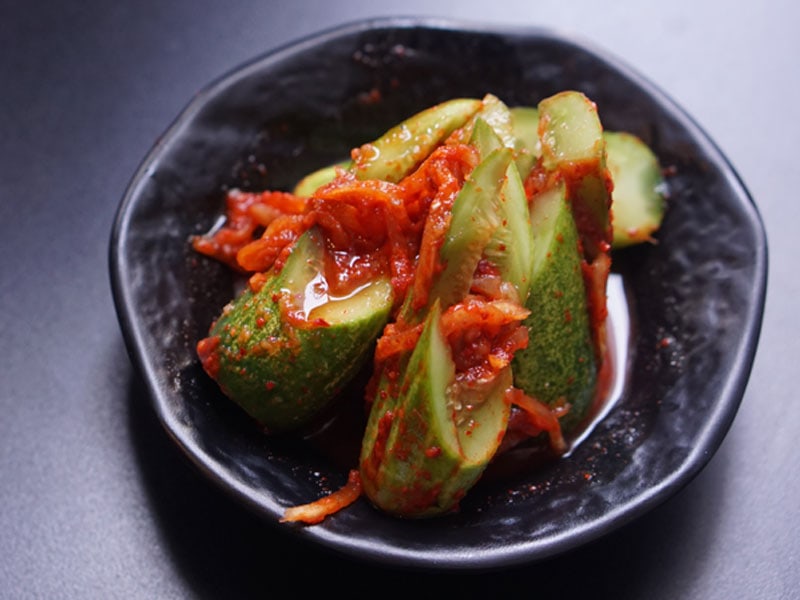
This kimchi variation with cucumber is like a more spicy and flavorful version of pickles that you usually have in the US. People cut Korean cucumbers into quarters and mix them with carrots, onions, gingers, and garlic.
2. Dongchimi (Radish Water Kimchi)
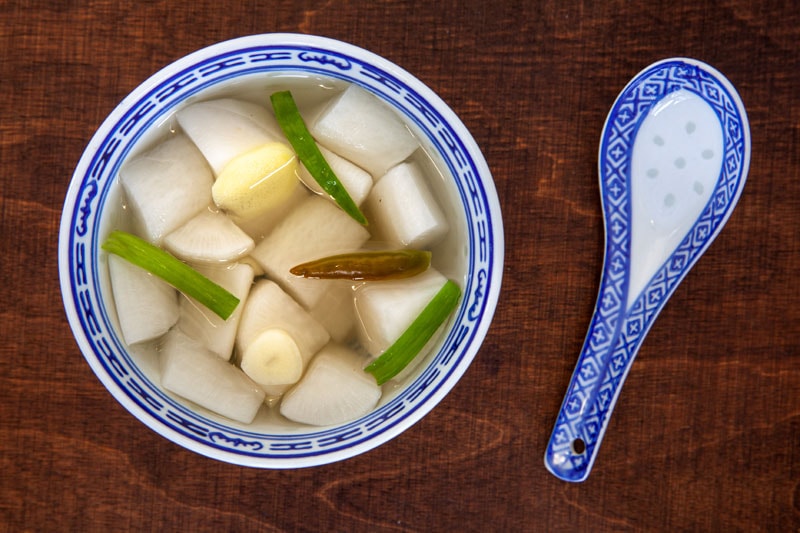
Dongchimi is roughly translated as “winter kimchi”. It is a combination of food and drink. Roundish radishes are cut up and salted in a solution of garlic, pepper, and Korean pear.
After the fermentation, people also use pickling water as a beverage and vegetables for food. Dongchimi has crystal clear water that is so eye-soothing.
3. Baechu Kimchi (Cabbage Kimchi)
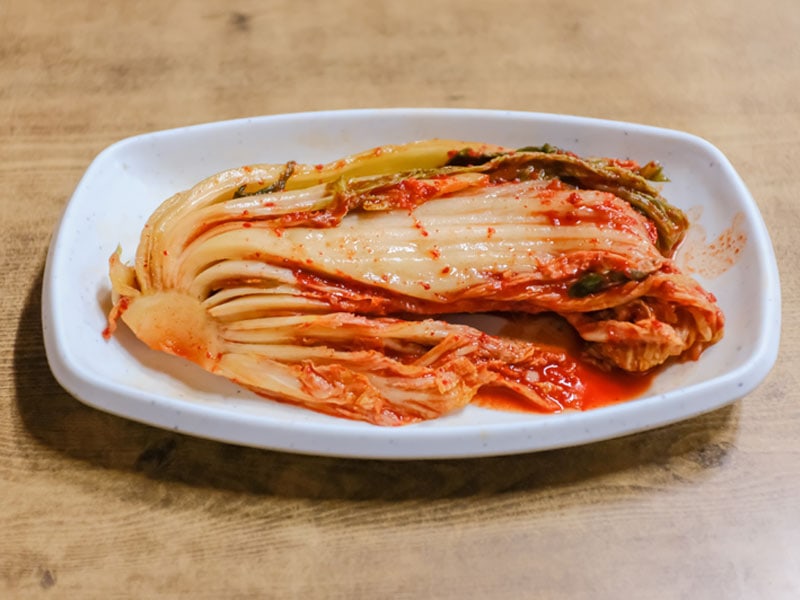
This version of Buddhist cuisine is unique for its delicate taste and healthfulness. What‘s special about this dish is that it omits five kinds of vegetables considered agents of invoking desire in humans: onion, green onion, chives, garlic, and leeks.
Other flavors are added to compensate for these missing spices, such as ginger, soy sauce, mushroom, mustard green, and radish.
4. Chonggak Kimchi (Ponytail Radish Kimchi)
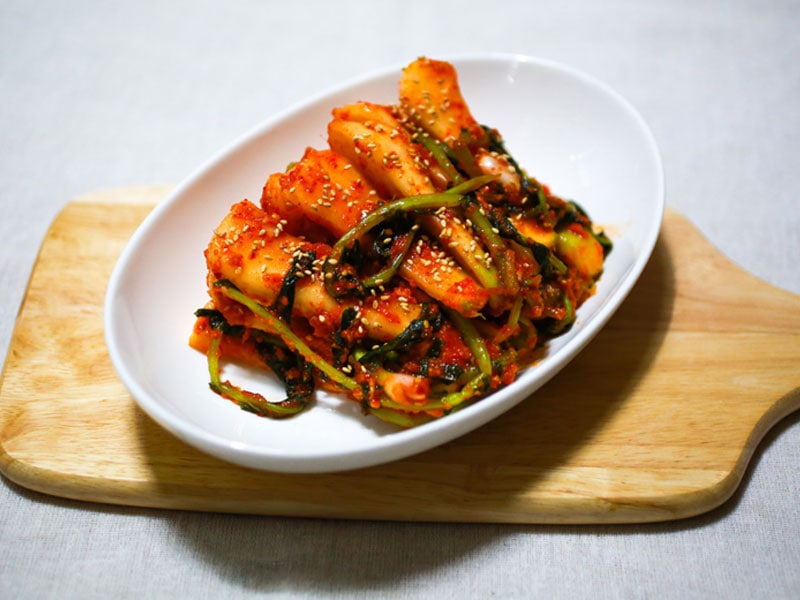
The green part of these small white radishes looks like ponytails, so that’s how the vegetable got that cute name. Chonggak usually has ginger, pepper flakes, garlic, and green onion.
You can serve Chonggak kimchi whole or in smaller pieces. The crunchy texture can produce a loud noise at first bite.
5. Baek Kimchi (White kimchi)
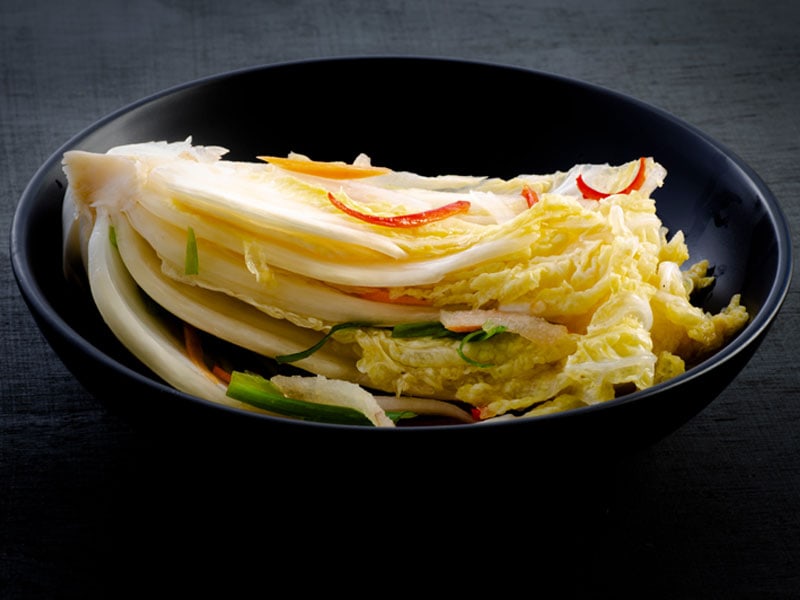
You would never think Baek kimchi is a kind of kimchi because of its white texture. Its mild and clean flavor greatly appeals to children’s first impression of kimchi.
People make Baek kimchi with the same process as normal kimchi but without hot pepper flakes. People may garnish with a couple of pepper slices for a vibrant color.
6. Kkakdugi (Cubed Radish Kimchi)
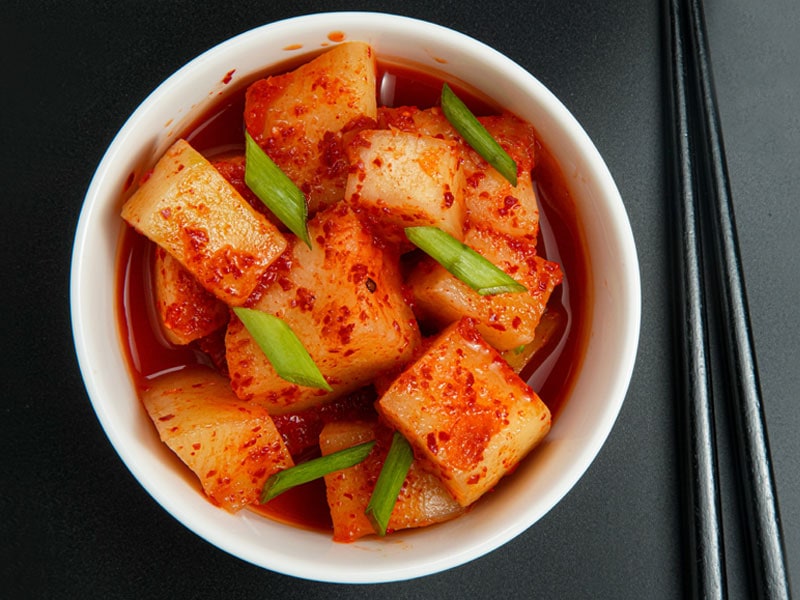
In this recipe, people slice radishes into small cubes. Kkakdugi possesses similar ingredients and methods as traditional kimchi. These little evil-looking cubes are amazingly crunchy and mouth-watering. Its bright red color will also invoke your appetite at first sight.
7. Nabak Kimchi (Water Kimchi)
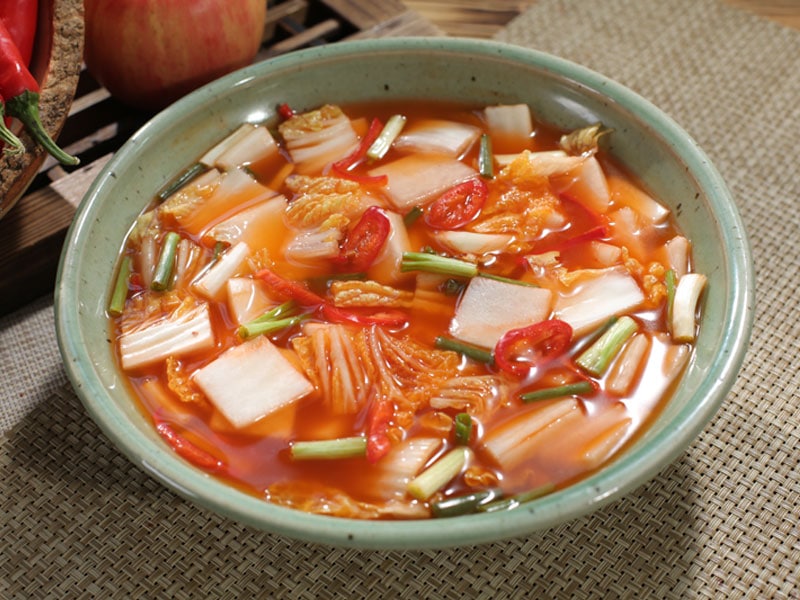
This kimchi soup will soothe your eyes with its soft-red water before pleasing your tongue with its minimal spiciness. The main ingredients consist of sliced radishes, carrots, and Chinese cabbage.
The brine’s flavor comes from garlic, onion, ginger, Korean pear, and a little pepper.
The Various Tastes Of Kimchi
Different types of kimchi offer different tastes and flavors depending on your choice of vegetables. But the iconic tastes of kimchi are sour, sweet, spicy, umami, and pungent flavors from various kinds of spices.
The factors that dictate the taste of kimchi are the types and proportions of spices and the time of fermentation. Here is a brief table of how kimchi tastes and the sources of those tastes.
| Tastes | Factors |
| Sour | Lactic acid from the fermentation process. |
| Spiciness | Korean chili pepper, garlic. |
| Sweet | Sugar, honey, pear, corn syrup. |
| Saltiness | Salt. |
| Umami | Fish sauce, fish paste. |
1. Sour Taste
Any fermented food comes with a sour taste. The fermentation process produces lactobacillus bacteria that turn the brine and the ingredients sour and tangy. If there is garlic in the ingredients, the kimchi taste will intensify in the fermentation process.
2. Spiciness
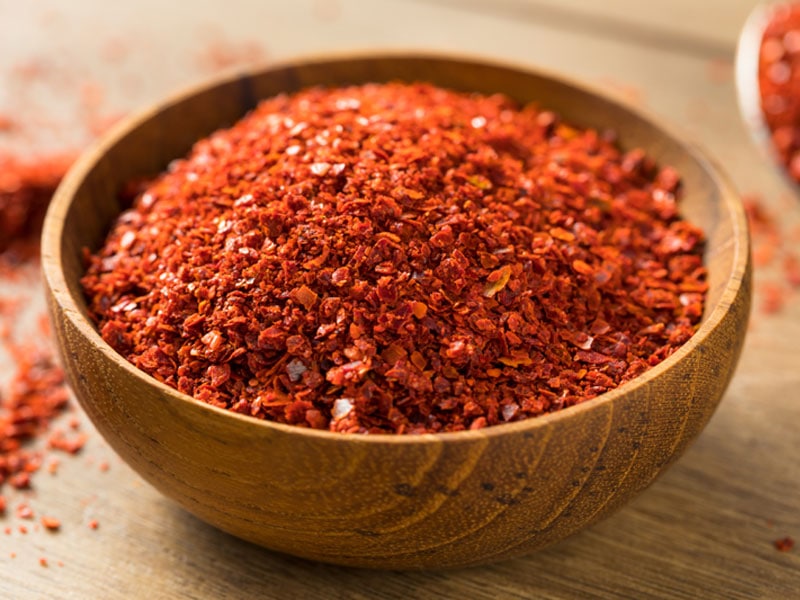
Korean foods, especially kimchi, are famous for their spiciness, which comes from a Korean chili pepper called Gochugaru. The spicy eating habit may be due to the extreme cold weather in Korea.
But not all kinds of kimchi might burn your tongue; some come with mild to no spicy at all.
3. Sweet Taste
The sweet taste of kimchi can come from various sources. In some recipes like Nabak kimchi, people add pears to produce a mild and naturally sweet taste. You can add sugar, honey, or even corn syrup to your homemade batch for more flavors.
Sugar is added as an initial provision for the yeast to thrive and start fermenting.
4. Salty Taste
The salty taste is from the brining stage, where ingredients are soaked in a salty brine to kill off harmful bacteria and extract the excess moisture inside the vegetables.
If you find your homemade kimchi too salty, you can fix it in a couple of ways, such as by adding more ingredients, rinsing it with water, or adding another less salty batch.
5. Umami Taste
Umami is originally a Japanese word that means “Pleasant and savory taste”. This taste is usually derived from cooked meat or fish.
This umami taste may be the reason some people cannot eat kimchi. The fish sauce or salted shrimp responsible for the umami taste also gives kimchi a strong smell and a pungent flavor.
6. Taste of mixed spices
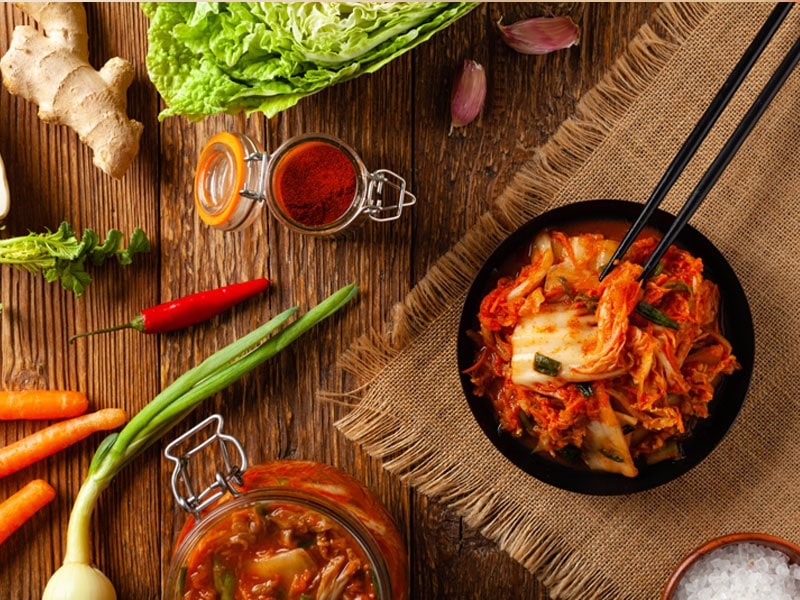
Spices such as garlic, green onions, ginger, and pepper give kimchi such a rich taste that few fermented foods possess.
Garlic with a pungent taste, green onion with a sharp taste, ginger with a peppery and sweet taste, and pepper with a spicy profile all make up a perfect combination of kimchi flavor.
Smell Of Kimchi
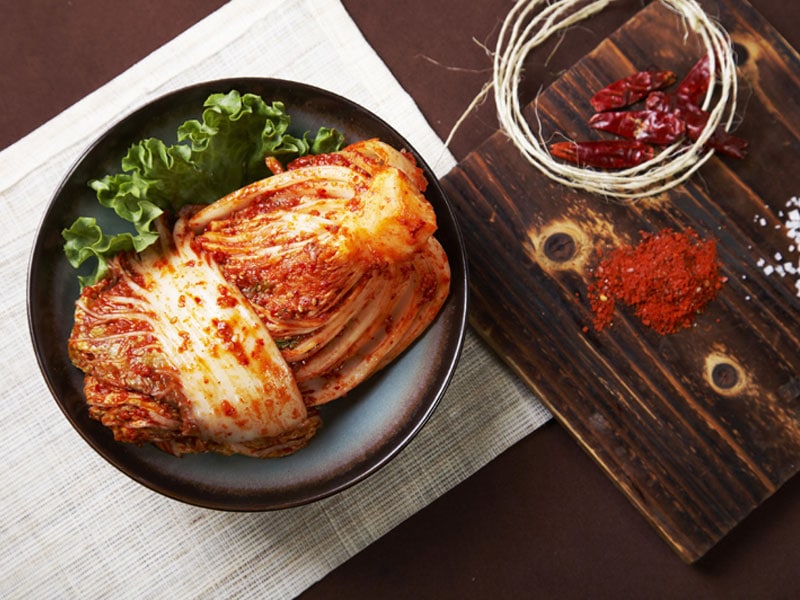
The smell of kimchi is not off-putting at first sniffs like blue cheese or Surströmming (Swedish fermented fish). Still, it prevents many people from actually trying this heaven-sent Korean dish because of its strong and complex smell, especially for westerners.
It’s hard to find a word to describe the smell of kimchi as a whole, but you can break it down and describe the smell individually.
The most prominent smell is the fermenting profile. There is also a hint of spices, such as garlic, ginger, and hot pepper. The fermented seafood smell comes from the fish or shrimp sauce, contributing to the pungent flavor.
Recently, scientists have attempted to “tone down” the smell of kimchi to make it more accessible to people in the west.
However, this attempt has proved futile since many Western kimchi lovers expressed that kimchi is all about tradition and culture and that they shouldn’t change kimchi because some foreigners can’t stand the smell.
How Is Kimchi Different From Fermented Pickles?
Both kimchi and fermented pickles must go through fermentation to reach their targeted state, and both are high in probiotics. Despite all the similarities, there is a big difference between them.
This table will tell you about all the distinctions between these two recipes:
Kimchi possesses a spicy, umami, sour, sweet, and salty taste, while pickles are only sour and salty. Unlike pickles with a blender smell, kimchi has a strong and complex smell from many ingredients.
Due to its complex contents, kimchi has a generally shorter shelf life (3-6 months in the fridge) than fermented pickles (up to 2 years in the fridge).
A batch of kimchi contains 24% protein, 51% carbohydrates, and 25% fat, while a batch of pickles contains 14% protein, 66% carbohydrate, and 20% fat. Everyone can see kimchi is richer in protein and fat, essential to muscle development.
As you can see from the table, kimchi packs more flavors and smells than pickles since they have more ingredients and spices. For the same reason, kimchi tends to have shorter shelf life than pickles. Its fermentation process also happens faster and turns sour quicker.
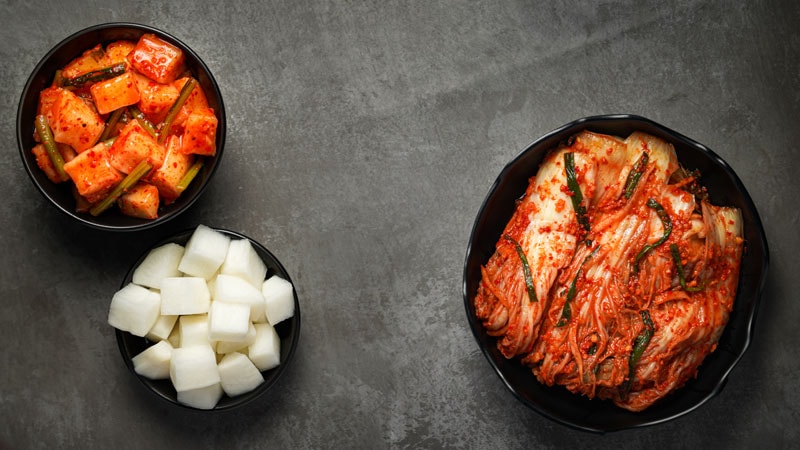
Best Foods To Go With Kimchi
Kimchi may be the most flexible side dish ever since it can go with many main dishes without diminishing their tastes.
Just be creative with your combinations with kimchi. The endless possibility may surprise you big time!
Here are some suggestions for your choice:
Dumpling
People usually introduce chopped kimchi to the dumpling filling. You can enjoy this dish as it is or with soy sauce.
Fried Rice
Kimchi fried rice usually goes with an omelet and bacon. In these recipes, people mix kimchi in the rice before drying it to intensify the kimchi flavor in the heat.
Soup
Adding kimchi to a bowl of hot soup will give your soup the kimchi flavor and taste. It also makes you sour and spicy.
Burger
Adding kimchi to your burger will balance the greasiness and add so many flavors to every bite.
Check out these recommendations to have some ideas about dishes to eat with kimchi!
Health Benefits Of Kimchi
Kimchi is a good multivitamin source due to its diverse ingredients. Kimchi contains vitamin C, vitamin K, vitamin b6, sodium, calories, carbs, protein, fat, fiber, Iron, and folate. (2)
The Lactobacillus produced in kimchi fermentation is extremely valuable to human health. They’re tiny guardian angels of our body. They’re said to be responsible for:
Cancer Prevention
Chinese cabbage ingredients in kimchi help prevent stomach cancer. Scientists find that Chinese cabbage can inhibit colorectal carcinogenesis thanks to its rich fiber content.
Common Cold Prevention
The Lactobacillus in kimchi may boost your immune system, which is responsible for preventing common colds.
Improving Cardiac Health
Kimchi improves cardiac health through its anti-inflammatory properties, as researchers suggest that inflammation may be an underlying cause of heart disease.
Improving Skin
Kimchi contains many necessary vitamins for your skin’s health.
According to research, kimchi also helps reduce inflammation, slow aging, and assist in weight loss.
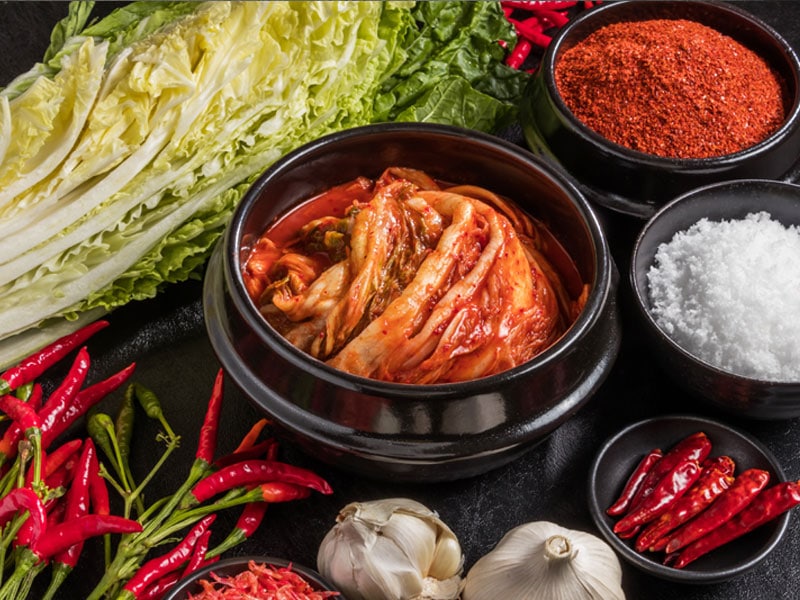
How To Choose Kimchi From The Store
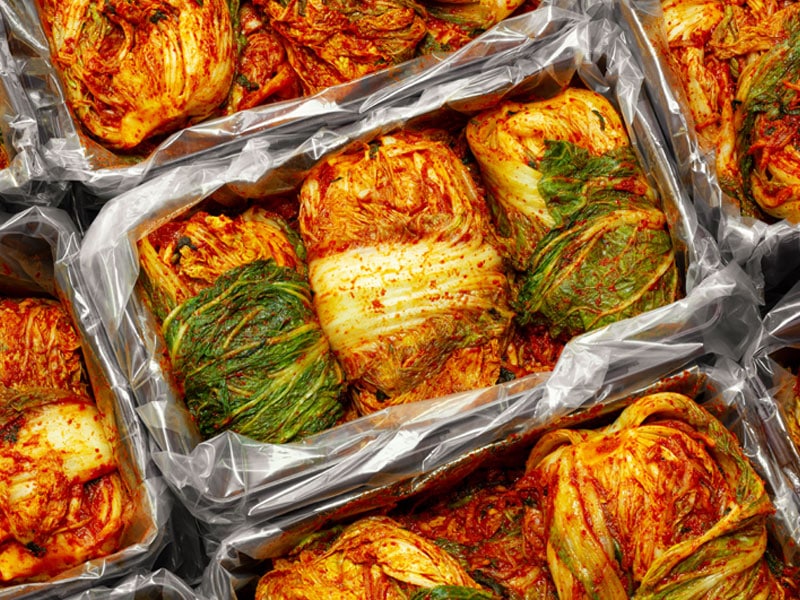
There are many kimchi brands in the store for you to pick from. When it comes to choosing packaged kimchi products, you just have to be mindful of the expiration date on the label.
If you prefer local brands or unpackaged kimchi from the supermarket, there are some criteria you can use to base your choice.
A good kimchi should have a balance of salt, heat, and lactic tang since that signifies a ripped fermentation process.
I prefer the ingredients to look well mixed and other spices to cover the cabbage. Moreover, the balance of salt, heat and tangy taste constitutes good kimchi.
If you are not a fan of too much spiciness, you should look for kimchi with less red texture.
FAQs
Here are some FAQs to clear your doubt about this amazing dish.
Kimchi, A Taste To Remember!
Kimchi is cheap, healthy, and flavorful. The famous Korean condiment is good for you in every way possible. There should be no reason stopping you from enjoying this wonderful Korean delicacy.
The barrier between you and this god-sent dish is its initial smell and taste. Once you‘ve got over it, kimchi’s enriching tastes and flavors can introduce you to a new cuisine philosophy. Don’t forget to comment and share this article to give more people insight into kimchi!
References
- Kimchi (2022).
- What is Kimchi? And Should You Eat It? (2020).

